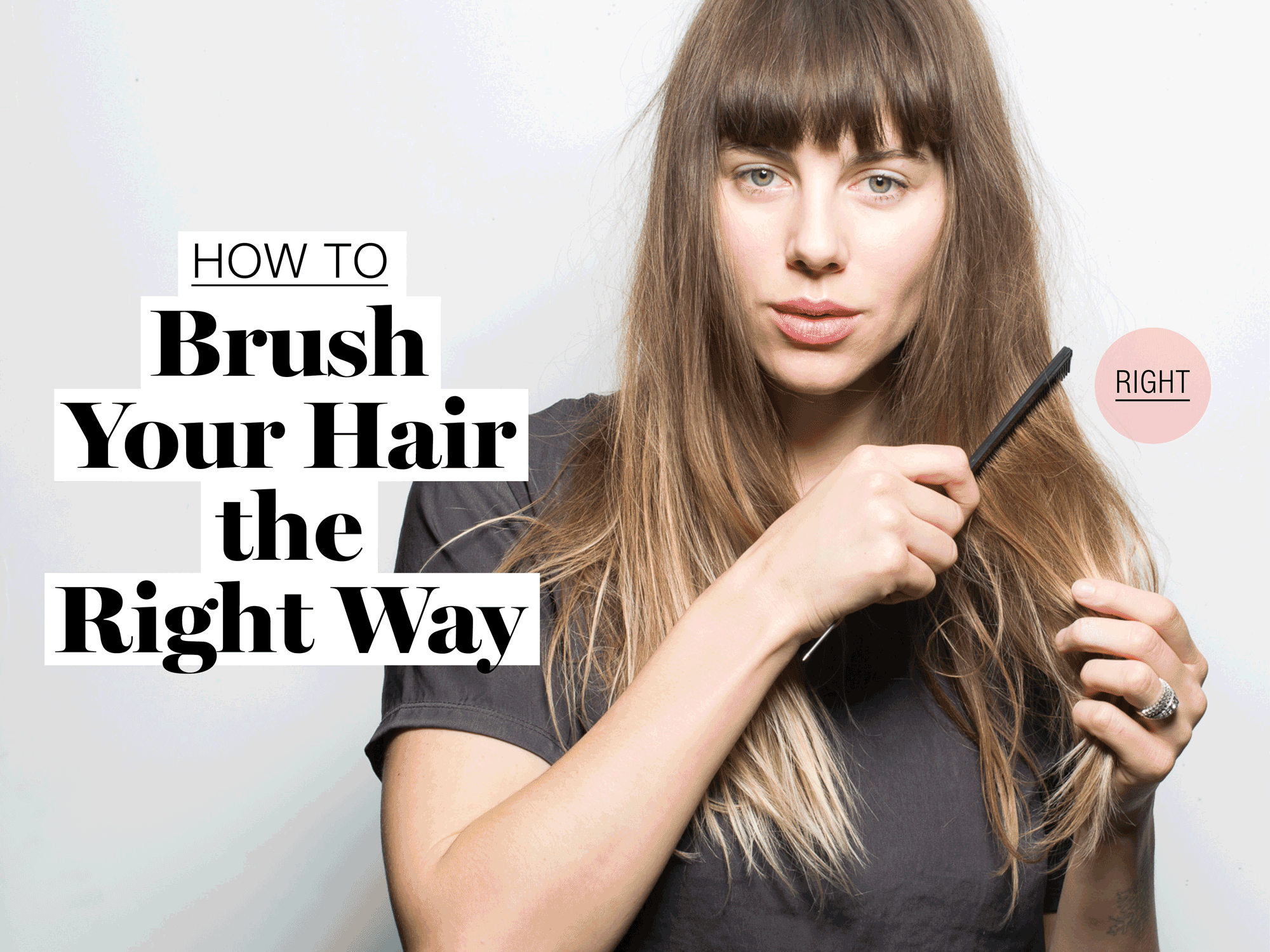Sometimes, the things that seem like they should be simple tasks, like folding a fitted sheet, are the toughest to figure out. Same goes for brushing your hair. (Really? Really.) Don't worry: We're not going to state the obvious five times over. Although it seems stupid-easy—pick up brush, comb it through hair, repeat—there's a legit science to it. Do it wrong and you could suffer serious hair issues, from breakage to a mass of tangles. But with the right brush and expert tips, you can keep your hair so soft, strong, and shiny that you'll make it a staple among your hair products—we promise. Here's how to brush your hair the right way; plus, the biggest mistakes to avoid.
Using the Wrong Brush
“I've met a lot of women who take a round or metal brush and try to work though their hair with it,” says Edward Tricomi, master stylist and co-founder of Warren Tricomi salons. But these brushes are built for drying hair only—and if you use them to work out tangles, they can actually snap your hair. And those brushes with little balls at the end of each bristle? Stay away, since your hair may wrap around the balls and get ripped out, says Suave Professionals Celebrity Stylist Jenny Cho. Your best bet is a gentler option, like a boar bristle brush or a comb with staggered teeth, which takes down knots without tearing them out.
Teasing It With Your Round Brush
Voluminous, Brigitte Bardot-inspired hair might be your #goals, but getting there can also do serious damage to your hair—especially if you're not using the right tool and technique. "Teasing requires a specific tool," explains Cho. "Invest in a tail comb or a teasing boar brush." The right way to use it: First, apply dry shampoo to your roots. Then, starting from halfway down the length of your hair, use your teasing-specific brush to apply firm brush strokes toward your scalp. Do this until there's cushion of hair at the base of your scalp, hit it with hairspray, and you're good to go.
Choosing the Wrong Comb
Combs were designed for one thing and one thing only: to detangle hair. But they're not all made equal. “A wide-tooth comb breaks the hair and, instead of detangling, locks in knots, leaving your hair rough and difficult to manage,” explains Tricomi. A fine-tooth comb is gentler on hair, while one with boar bristles also does the trick.
Going In the Wrong Direction
"Most women make the mistake of brushing from roots to ends on dry hair, which creates more knots and ultimately adds unnecessary damage," explains Cho. Mind. Blown. Really, you should start a few inches from your ends and brush it downward, moving upwards and closer to your scalp only when you've taken care of all the tangles in the section you're working with at the moment. Going down the entire length of hair in one, long swipe makes it inevitable that you'll snag your brush on multiple tangles, increasing your odds of breakage.
Brushing Hair Without Conditioning It First
If you brush out tangles as soon as you hop out of the shower, that's totally fine. But keep in mind that hair is more fragile—and prone to breakage—when it's wet, meaning you need to give it some extra protection. Try partially rinsing out your conditioner so some remains in your damp hair when you comb it out. “This helps completely detangle your hair so it’s soft and malleable,” says Tricomi. Cho also recommends stashing a leave-in conditioner near your sink or behind the mirror, so you don't have to climb back into the shower when you're ready to brush.
For more on how to brush your hair correctly and other style mistakes, check out:
-5 Things Every Woman With Textured Hair Should Know
-The Best Hair Brush for Your Hair Type
-10 Curling Iron Mistakes You're Probably Making
